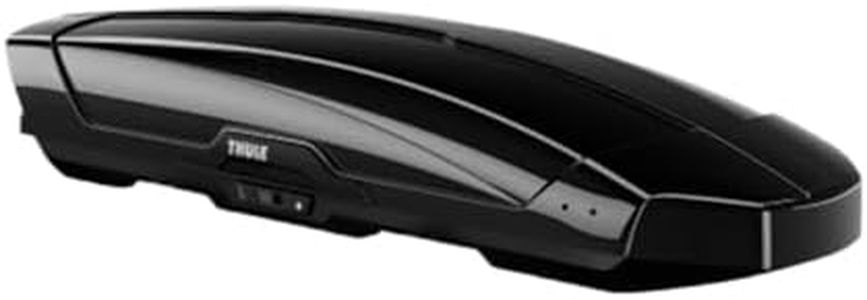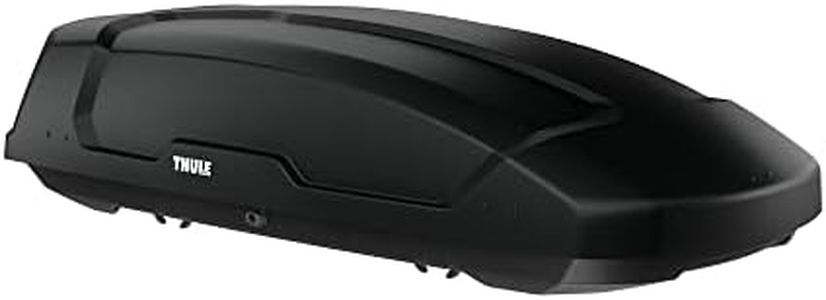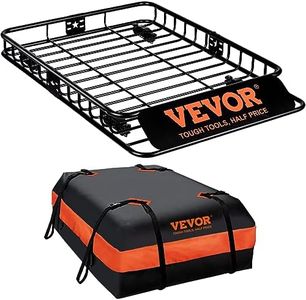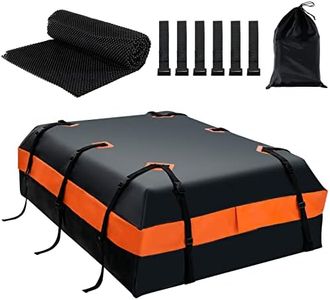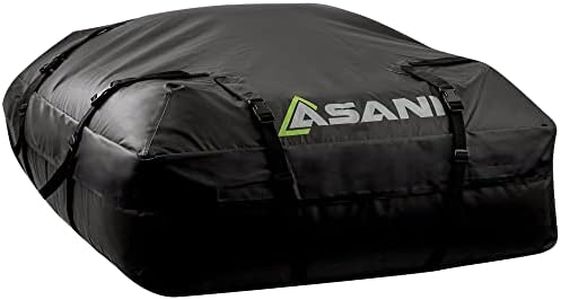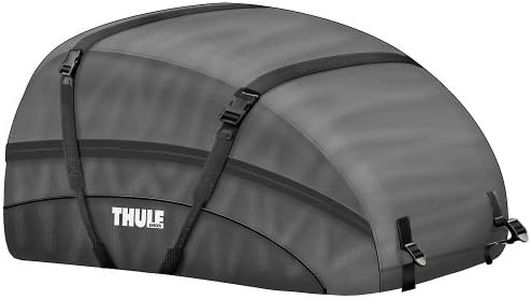We Use CookiesWe use cookies to enhance the security, performance,
functionality and for analytical and promotional activities. By continuing to browse this site you
are agreeing to our privacy policy
10 Best Roof Cargo Boxes
From leading brands and best sellers available on the web.Buying Guide for the Best Roof Cargo Boxes
Choosing a roof cargo box for your vehicle can really boost your storage space and make road trips or family outings easier. The key is to find a cargo box that matches your needs and your vehicle, while making sure it’s safe, easy to use, and suitable for the types of items you plan to carry. It’s a good idea to think about what you’ll use the box for most, how often you'll install and remove it, and if you need to open it from one side or both. Always check your car’s roof weight limit and roof rack compatibility before making a final decision.Capacity (Volume)Capacity is usually measured in liters or cubic feet and tells you how much you can fit inside the box. This is important because going too small can leave you short of space, while a box that’s too big may be awkward or overly heavy. You’ll see boxes categorized into small, medium, and large volumes. Small boxes (up to around 350 liters/12 cubic feet) work for a couple of suitcases or sports gear, making them great for solo travelers or couples. Medium boxes (350–500 liters/12–18 cubic feet) suit most families, handling several carry-on bags or a mix of camping gear. Large boxes (over 500 liters/18+ cubic feet) are best for big families or bulky items. Think about the longest items you plan to carry, like skis, and choose a size that matches your main use without overwhelming your car’s roof.
DimensionsThe outside and inside measurements of a cargo box determine what you can fit inside and how the box fits on your roof. Length especially matters for long items like skis or snowboards, while width affects how much roof space is left for other gear, like bike racks. Taller boxes offer more vertical room but can increase wind resistance. To pick the right dimensions, measure the available roof space and compare it to the box, making sure it won’t block your trunk or hatch when open, and that it’ll carry your longest items.
Weight LimitEvery cargo box has a maximum weight it can safely hold. This is important for safety: overloading can damage your box, rack, or roof, and can impact driving. Cargo box weight limits typically range from about 40 to 75 kg (90–165 lbs). Check your vehicle’s roof load rating as well, since you can’t exceed that total weight (load rating + box + rack + contents). If you expect only to carry lightweight items like bedding or clothes, a lower limit is fine, but for heavier cargo, opt for a model with a higher weight capacity.
Mounting SystemThe mounting system refers to how the box attaches to your car’s roof rack. Some systems are tool-free and quick to install, while others require more effort. This is important if you plan to take the box on and off frequently. Simpler, clamp-style mounts save time and are easier for beginners, while more complex systems might offer stronger security. Choose a mounting style based on how handy you are, how often you’ll remove the box, and what type of roof rack you own. Always make sure the box is compatible with your rack’s size and shape.
Opening MechanismCargo boxes can open from one side, both sides, or from the rear. This affects how easy it is to access your gear when parked in different spots. Single-side opening boxes usually cost less and work if you always park on the same side, while dual-side access makes loading and unloading simpler in tight spaces. Rear-opening boxes can be safest for highway stops. Consider where you’ll typically load and unload your cargo and pick an opening mechanism that matches.
Security FeaturesSecurity features help prevent theft of both the box and its contents. Most cargo boxes come with some form of locking system. Basic locks secure the lid closed, while advanced locks might also lock the box to the rack. If you plan to leave items in the box overnight or park in public places, look for a robust lock and check how easy the mechanism is to use. Pick a security level that matches where and how you’ll use the box.
Aerodynamics (Shape)Aerodynamics refers to how efficiently the box cuts through the air while driving. Sleeker, more streamlined boxes create less wind resistance, which can help minimize noise and reduce the impact on fuel economy. Bulky and tall boxes can be noisier and less efficient. If you do a lot of highway driving or want the quietest, most economical box, choose a slim, tapered design. For shorter trips or mostly city use, aerodynamics matter less.
Weather ResistanceWeather resistance means how well the box keeps out rain, snow, and dust. Well-sealed boxes keep your belongings dry and protected in all conditions. This is very important if you’ll be carrying clothes, electronics, or gear you don’t want to get wet. Better weather sealing and UV protection usually come with pricier boxes, but if you expect to use the box in tough weather, pick one known for excellent sealing.
